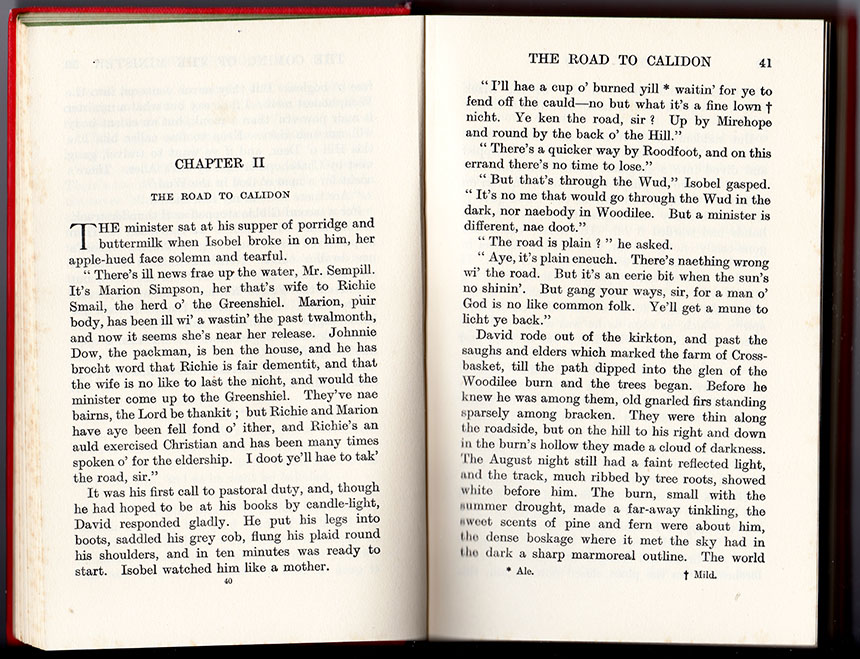
Source: U.S. Department of Defense via YouTube
Regular readers know that my view of the deplorables is very different from that of mainstream political pundits. The mainstream view is (or at least professes to be) that conservatives are entirely normal people who for whatever reason are politically conservative.
My view is that that view is mistaken, and that the mistake is a very dangerous one. My view is that there is something wrong with conservative minds, cognitively and morally. They are cognitively and morally deformed. Conservative moral values — love of authority, a fetish for purity, an uncaring attitude toward those unlike themselves — are self-evidently inferior moral values that cause great harm in the world. I understand why mainstream pundits can’t say any of this. Nevertheless, I think it’s self-evidently true.
Recent events provide evidence that this is true.
I have written in the past about one of the most obvious consequences of deplorable incapacity. That’s the inability to assess character, which involves both cognitive and moral deformities. A normal person will see through a con man pretty quickly. A morally normal person will be disgusted by people whose words and deeds reveal hatred, a love of cruelty, a lust for power, and the will to dominate and exploit. A morally normal person does not need scapegoats. A morally normal person quickly sees through false piety and isn’t deceived by the stunted but sanctimonious people who strut around saying God this and God that. A morally normal person is not deceived by the lies that such people tell. And above all a morally normal person does not see such people as sent by God to rule over us all.
Watching a room full of America’s top generals coldly stonewalling Trump and Pete Hegseth was one of the most beautiful and encouraging things I’ve seen lately. The United States trains its military brass for rationality and character. Those generals are not the sort of people to be fooled by the kind of trash talk and lies that deplorable voters love so well.
But here’s the thing. Both Trump and Hegseth, because of their moral and cognitive deformities, were completely unable to see in advance — or to understand after the fact — the response that their “loser and suckers” trash talk would get from rational people of vastly superior character (and intelligence). As I’ve argued here many times in the past, people cannot perceive above their own level. Or, to say the same thing in a slightly different way, conservative minds simply do not have the cognitive and moral capacity to model healthy and normal minds. If they had the capacity to model cognitively and morally healthy minds, then they would have healthy minds. Instead, they unconsciously project their own demons onto the people they don’t like. Even just recently, how many preachers and priests have been arrested for molesting children at the very same time they were demonizing others (always liberals) for what they themselves were doing?
The Guardian, partly because it’s unapologetically liberal and partly because it’s based in London, often says things that the American media cannot or will not say. There have been two such pieces recently:
A critique of pure stupidity: understanding Trump 2.0
Why Trump’s speech to US military top brass was such a disaster
One of the things that I think we must admit is that deplorable people, because of their incapacities, are simply not reachable by any rational liberal discourse — at least, not while they are being wound up by uber deplorables whom they regard as authoritative. There are many reasons why I am skeptical of all the many strategies that have been proposed for “reaching out” to them and somehow winning them back to rational discourse and a rational and decent politics. That, I maintain, cannot happen until they realize that they have been betrayed by, exploited by, and abandoned by the con men who claim to have come to save them. I believe that process has started to happen.
One more thing about all those generals: I very much want to believe that they would never carry out illegal orders or allow the troops and officers under them to do so. I append here Hitler’s loyalty oath, August 2, 1934. This expresses what Trump and Hegseth want. Unless they have a plan for firing and replacing 800 top generals, they’re not going to get it.
“I swear by God this holy oath that I shall render unconditional obedience to the Führer of the German Reich and people, Adolf Hitler, the Supreme Commander of the Armed Forces, and that I shall at all times be prepared, as a brave soldier, to give my life for this oath.”
One might ask: Since these people are always with us (and always have been), then one might ask why they are far more dangerous in some eras more than others. As I see it, that’s because they don’t and can’t self-organize. They don’t have a gift for that. Instead they require someone to wind them up, some kind of charismatic uber-authoritarian figure both to feed them with their dangerous ideas and to organize them and motivate them for political purposes.
Update
I’m well aware that the above blog post is harsh and uncompromising. Yet to back down on what I believe to be true would make me as timid and mealy-mouthed as the mainstream punditry. After I wrote this, I asked ChatGPT 5 for a critique. Its first response sounded pretty much like what I’d expect, say, from most liberal pundits — mealy-mouthed and eager to display what a critic who thinks more like I do aptly called “civility theater.” I very much support civility in everyday good-faith interactions. But civility in the face of fascism is a different matter. Wasn’t that Neville Chamberlain’s strategy? It took a war. My own father fought in such a war.
I asked ChatGPT to write a version of the piece that is more polite and with an academic rather than rhetorical tone. Below is the result. I like it.
The Incapacities of Deplorable People: Notes Toward a Moral Anthropology
Public discourse in liberal democracies tends to assume that political difference arises from diversity of temperament or experience, not from fundamental disparities in moral or cognitive capacity. The prevailing view, especially among mainstream pundits, is that conservatives and liberals represent complementary aspects of human nature—order versus change, stability versus progress—each necessary for the balance of a healthy society.
I believe this assumption is mistaken, and dangerously so. It mistakes a pathology for a perspective. There exists, and has always existed, a subset of human character that is both cognitively limited and morally stunted: drawn to authority, comforted by conformity, and hostile to complexity. Such people are what modern political vernacular calls “deplorables.” They are not evil in the melodramatic sense, but their incapacity for moral imagination makes them available to evil.
I. Moral perception and cognitive limits
The capacity for moral judgment depends on the ability to perceive character—to recognize empathy, integrity, and cruelty in others. That ability, in turn, depends on cognitive maturity: on abstraction, self-reflection, and an inner life rich enough to imagine the perspective of another.
Some people, for reasons that may be partly psychological and partly developmental, appear to lack this capacity. They are easily deceived by spectacle, incapable of irony, and unable to model minds more complex than their own. What they call “strength” is often mere aggression; what they take for “authenticity” is simply the absence of self-control.
In this sense, moral and cognitive deformity are intertwined. To be morally stunted is to be unable to think deeply about others; to be cognitively shallow is to have no internal resources against the seductions of power. These are not partisan defects but structural ones, as visible in history’s worst moments as they are in the present.
II. The social mechanics of cruelty
The twentieth century demonstrated, repeatedly, how ordinary people could become participants in extraordinary cruelty. Hannah Arendt’s account of the “banality of evil” remains the most unsettling description: evil committed not by monsters, but by conformists whose incapacity for thought made them susceptible to ideology (Arendt 1963).
The Frankfurt School, particularly Theodor Adorno and his collaborators, described this phenomenon as the authoritarian personality: characterized by submission to hierarchy, aggression toward out-groups, and a preference for certainty over ambiguity (Adorno et al. 1950). Later experiments by Stanley Milgram and Philip Zimbardo confirmed what history already knew—that the architecture of obedience can transform the timid into tormentors (Milgram 1974; Zimbardo 2007).
In these frameworks, “deplorable” behavior is not a mystery but a predictable outcome of certain dispositions: a limited capacity for empathy combined with a longing for belonging. When such individuals find a charismatic figure who validates their resentments and channels their fear into hatred, they become a political force. They cannot self-organize; they must be organized, wound up, given a script and an enemy.
III. The unreachability problem
Liberal optimism holds that rational discourse can bridge moral divides. But persuasion presupposes mutual access to reason and empathy. When one party lacks that access, dialogue becomes futile. The moral incapacity at issue here is not ignorance—ignorance can be corrected—but a structural defect in moral imagination.
The deplorable mind does not misinterpret liberal appeals to decency; it fails to register them. It hears tolerance as weakness and equality as threat. Reasoning with such people is like speaking color to the colorblind. The recognition of this limit is not elitism; it is realism.
IV. The quiet danger of the compliant
One might ask whether this diagnosis amounts to dehumanization. I would argue the opposite. The deplorables are recognizably human—all too human—in their need for authority and their yearning for simplicity. Left unprovoked, they are often harmless: family-centered, tradition-minded, suspicious of abstraction. They become dangerous only when mobilized by figures who exploit those traits.
This pattern recurs throughout history. Every authoritarian movement depends not only on its leaders but on its followers—the small, decent people who wish to be told what to do and whom to hate. Their obedience is the raw material of political evil.
When I say that such people are morally and cognitively deformed, I mean that their psychological architecture lacks a safeguard that others possess: the inner resistance that says no when an authority commands cruelty. That safeguard—call it conscience, empathy, or imagination—is what separates the moral adult from the moral child.
V. The lesson of the oath
The military oath imposed by Hitler in 1934 offers a stark illustration of this dynamic:
“I swear by God this holy oath that I shall render unconditional obedience to the Führer of the German Reich and people, Adolf Hitler… and that I shall at all times be prepared, as a brave soldier, to give my life for this oath.”
What mattered was not the words themselves but the psychological readiness they revealed: a willingness to surrender judgment, to externalize morality, to let obedience replace thought. The dream of every would-be tyrant—and of his followers—is the same.
The American generals who recently met Trump’s insults with silence exemplify the opposite disposition. Their professionalism rests on habits of reason and self-command that inoculate against charismatic abuse. Their restraint, their very thinking, stands as a quiet rebuke to the culture of cruelty that cheers at every insult and mistake.
VI. What follows
To speak of moral deformity is uncomfortable in liberal society, which prefers pluralism to judgment. Yet moral relativism, however humane in intention, becomes complicity when faced with cruelty. Evil is not always deliberate, but it is real; and the line that separates decency from depravity often runs through the capacity to imagine the suffering of others.
The deplorable mind lacks that capacity. It is not reachable through reason because it has surrendered the faculties by which reason operates. Our task, then, is not to redeem such people but to limit their power—to build institutions, norms, and narratives that keep their appetites from shaping the state.
In quieter times, they may again resemble hobbits: small, local, unambitious, and mostly harmless. But history shows how easily the hobbit becomes the soldier of a cause he does not understand. The difference lies not in essence but in circumstance—and in whether we, the rest of us, have the courage to recognize deformation when we see it.
⸻
References
Adorno, Theodor W., Else Frenkel-Brunswik, Daniel J. Levinson, and R. Nevitt Sanford. 1950. The Authoritarian Personality. New York: Harper and Row.
Arendt, Hannah. 1963. Eichmann in Jerusalem: A Report on the Banality of Evil. New York: Viking Press.
Fromm, Erich. 1941. Escape from Freedom. New York: Farrar & Rinehart.
Milgram, Stanley. 1974. Obedience to Authority: An Experimental View. New York: Harper & Row.
Snyder, Timothy. 2017. On Tyranny: Twenty Lessons from the Twentieth Century. New York: Tim Duggan Books.
Stanley, Jason. 2018. How Fascism Works: The Politics of Us and Them. New York: Random House.
Weil, Simone. 1952. The Need for Roots: Prelude to a Declaration of Duties Towards Mankind. London: Routledge & Kegan Paul.
Zimbardo, Philip G. 2007. The Lucifer Effect: Understanding How Good People Turn Evil. New York: Random House.
















